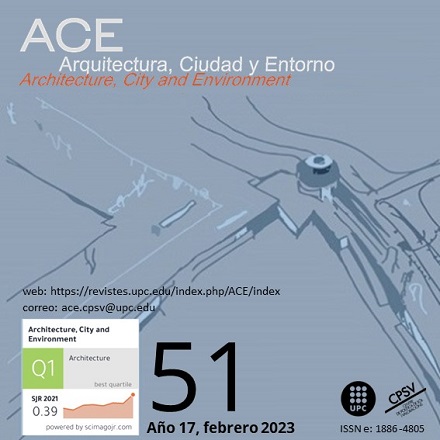Inventaris de Paisatges Culturals. Teories, mètodes i tècniques
DOI:
https://doi.org/10.5821/ace.17.51.11807Paraules clau:
Paisatge cultural, documentació, gestió del patrimoni cultural, gestió del territoriResum
L'interès pels paisatges culturals des d'àmbits acadèmics i administratius s'ha incrementat en els últims decennis a causa de la globalització, amb la conseqüent pèrdua del caràcter distintiu dels territoris, i a l'acceleració dels processos de transformació del mitjà. Aquesta situació ha propiciat, com va ocórrer en el passat amb el patrimoni moble i immoble, l'elaboració d'inventaris de paisatges culturals com a primer pas perquè en prengueu coneixement, reconeixement i preservació davant els potencials impactes que posen en risc els seus valors culturals i naturals. Les diferents teories, mètodes i tècniques sobre les quals es construeixen aquests inventaris poden identificar-se a través de les respostes als següents interrogants Què s'inventariarà?, Per a què i per a qui es realitzarà l'inventari?, Qui liderarà la seva elaboració? Quin serà el procés de treball? Quina informació és necessària? Com es produirà i gestionar aquesta informació? A partir d'una anàlisi bibliogràfica es compararan els principals criteris, mètodes i tècniques aplicats en l'elaboració d'un conjunt d'inventaris de paisatges culturals d'Europa i Amèrica del Nord, i altres d'abast mundial, per a concloure que, encara que el paisatge cultural constitueix una categoria patrimonial cada vegada més assentada en la teoria i en la pràctica de la recerca i gestió del patrimoni cultural, encara necessita de la definició de criteris comunament acceptats per al seu registre i documentació.
Descàrregues
Publicades
Número
Secció
Llicència
| CRITERIS DE PROTECCIÓ INTEL·LECTUAL |
En aquest moment es compta amb la protecció de la Oficina Espanyola de Patents i Marques, mentre que la protecció global s'està tramitant davant la Organització Mundial de la Propietat Intel·lectual (OMPI/WIPO). Així mateix, la Oficina del Número de Sèrie Estàndar Internacional (ISSN) ha otorgat els següents números: 1886-4805 (versió electrònica) i 1887-7052 (versió en paper). |
| COPYRIGHT |
El contingut dels articles i els comentaris en ells expresats són responsabilitat exclusiva dels seus actors, i no reflexen necessariament la opinió del Comité Editor de la revista. Els treballs publicats per ACE queden sotmesos a la llicència CC BY-NC-ND 3.0 ES http://creativecommons.org/licenses/by-nc-nd/3.0/es/ La qual cosa vol dir que les persones autores només tenen i retenen els drets d'autor dintre de les limitacions imposades per la anterior llicència |





































